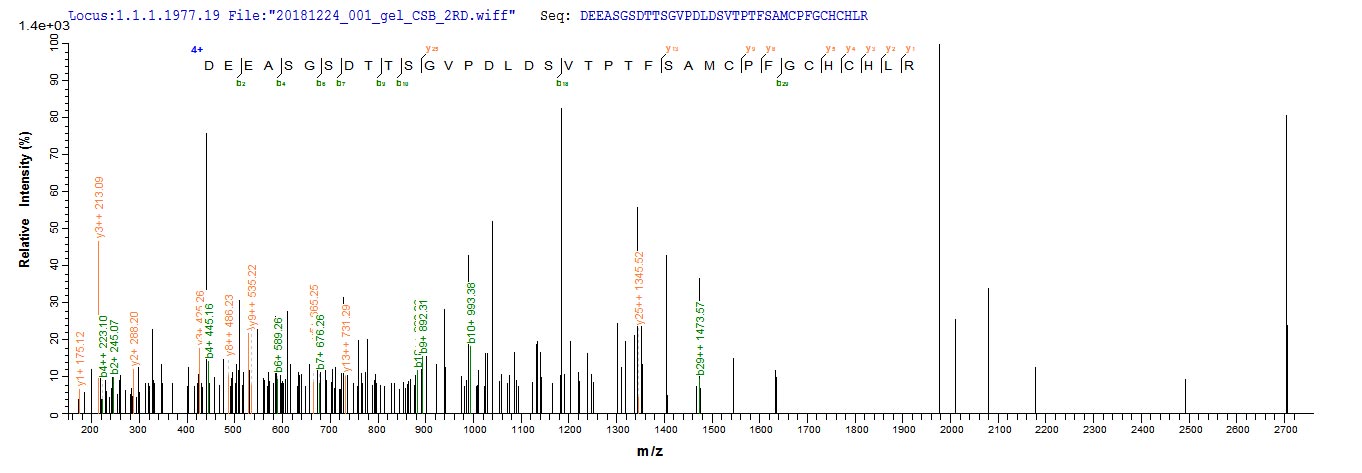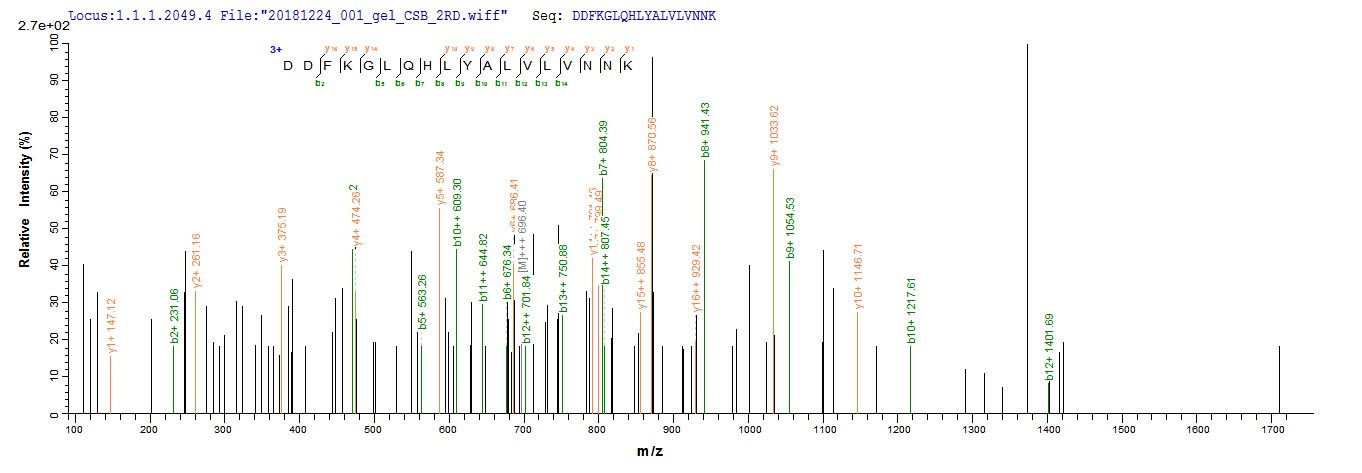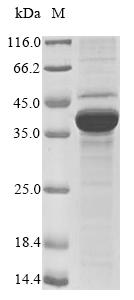Thanks for your inquiry.
1. Recombinant Mouse Biglycan(Bgn)
CSB-EP002683MO >> E.coli
Lead time:
Expression Region: 38-369aa; Full length of the mature protein.
Tag information:N-terminal 10xHis-tagged and C-terminal Myc-tagged
Target protein Sequence:(Not include the tag sequence and signal peptide sequence)
DEEASGSDTTSGVPDLDSVTPTFSAMCPFGCHCHLRVVQCSDLGLKTVPKEISPDTTLLDLQNNDISELRKDDFKGLQHLYALVLVNNKISKIHEKAFSPLRKLQKLYISKNHLVEIPPNLPSSLVELRIHDNRIRKVPKGVFSGLRNMNCIEMGGNPLENSGFEPGAFDGLKLNYLRISEAKLTGIPKDLPETLNELHLDHNKIQAIELEDLLRYSKLYRLGLGHNQIRMIENGSLSFLPTLRELHLDNNKLSRVPAGLPDLKLLQVVYLHSNNITKVGINDFCPMGFGVKRAYYNGISLFNNPVPYWEVQPATFRCVTDRLAIQFGNYKK
2.Recombinant Mouse Chitinase-3-like protein 1(Chi3l1)
CSB-EP720246MO >> E.coli
Lead time:
Expression Region: 30-389aa; Full length of the mature protein.
Tag information:N-terminal 10xHis-tagged and C-terminal Myc-tagged
Target protein Sequence:(Not include the tag sequence and signal peptide sequence)
YKLVCYFTSWSQYREGVGSFLPDAIQPFLCTHIIYSFANISSDNMLSTWEWNDESNYDKLNKLKTRNTNLKTLLSVGGWKFGEKRFSEIASNTERRTAFVRSVAPFLRSYGFDGLDLAWLYPRLRDKQYFSTLIKELNAEFTKEVQPGREKLLLSAALSAGKVAIDTGYDIAQIAQHLDFINLMTYDFHGVWRQITGHHSPLFQGQKDTRFDRYSNVNYAVQYMIRLGAQASKLLMGIPTFGKSFTLASSENQLGAPISGEGLPGRFTKEAGTLAYYEICDFLKGAEVHRLSNEKVPFATKGNQWVGYEDKESVKNKVGFLKEKKLAGAMVWALDLDDFQGTCQPKEFFPLTNAIKDALA
Yes, for these two proteins, what we provide is the full length of the mature protein, not include the signal peptide,
In general, the strong hydrophobicity of the signal peptide will increase the difficulty of expression.
At the same time, the signal peptide will be cut off by the signal peptidase in the process of secretion expression.
The mature protein does not contain the signal peptide, and the functions for most of the protein are realized through the mature protein.
PS: If you need to express the proteins with the full sequence including the signal peptide, we can also try to express them for you, but the prices will be higher.






